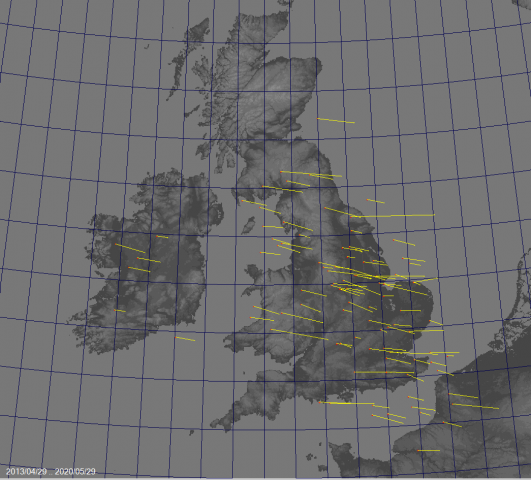The path of comet 1P/Halley crosses the Earth’s orbit twice a year, in early May when it descends below the ecliptic, then again in October at its ascending node. At these times Halley’s debris gives us the eta Aquariid and Orionid meteors, respectively.
The ETAs are visible from late April and throughout May, reaching maximum activity between May 5 to 7. Unlike the other major showers, for observers in the UK and Ireland their radiant doesn’t climb above the horizon until about 01:45 UT, so they are only visible in the brief pre-dawn twilight hours, hence their hourly rates are low. Tracie Heywood has aptly described them as being almost a daytime shower for northern observers; locations in southern Europe and the tropics are more favoured. This is the ground track of 97 multi-station ETAs, taken from NEMETODE data:

Note the lengths of the tracks and that fewer ETAs are recorded at higher latitudes because of the strong twilight. They are swift meteors, with a geocentric velocity of 66 km/s. Their low altitude radiant produces distinctive long-pathed meteors as they streak across the sky. This is a characteristic of the ETAs as seen from our islands.
We are now recording a few ETAs. If the bright skies are washing out your views, one tip is to reduce the brightness setting in the video capture card / board, but not so much that the midnight captures are too dark.
Please report your observations to the Meteor Section
Clear skies,
Alex.